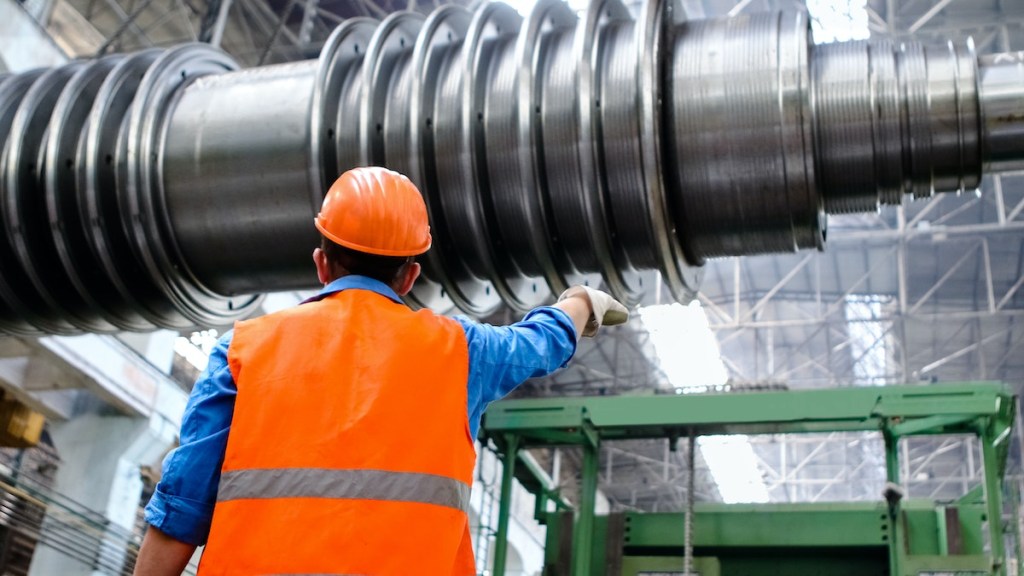By Pushan Sharma and Elizabeth Master
Ease of Doing Business for MSMEs: With the players selected by the government under the Production Linked Incentive (PLI) scheme for manufacturing white goods such as air conditioners (ACs) and light-emitting diodes (LEDs), small and medium enterprises (SMEs) are in with a chance to partake the spoils through sub-contracting.
The PLI scheme for this segment, approved in April last year, is aimed at boosting local manufacturing and, thereby, reducing imports.
Also Read: YSR Congress party leader Vijayasai Reddy urges govt to double the time limit for credit repayment from 90 days to 180 days for MSMEs
In ACs, for instance, as much as 70-75 per cent of the components — primarily compressors, control assemblies, copper tubes, motors, heat exchangers, cross-flow fans, and service valves — are imported, mainly from China and Thailand.
The government is focusing on building the component ecosystem and expects domestic value addition to increase from 25 per cent at present to 75 per cent over the next five years, aided by the scheme. To this end, it has announced incentives on high-value (aluminium foil, copper tubes, and compressors) and low-value AC intermediates (printed circuit board assembly for controllers, brushless DC motors, service valves, and cross-flow fans).
Benefits offered by the scheme
The government has approved the PLI scheme for white goods with a total budgetary outlay of Rs 6,238 crore.
The bulk of that spend would be towards ACs, as per industry sources. The segments targeted are high- and low-value AC intermediates.
The scheme will extend an incentive of 4-6 per cent to eligible companies on incremental sales (net of taxes) over the base year of goods manufactured in India for a period of five years subsequent to the base year and one year of gestation period.
The actual disbursement of PLI for a respective year will be subsequent to that year. For example, subject to fulfilling the conditions of cumulative threshold incremental investment up to fiscal 2022 over the base year and threshold incremental sales of manufactured goods over the base year in fiscal 2023, the PLI will be disbursed in fiscal 2024.
The eligibility criteria
To be eligible for the PLI benefits, a company must make greenfield or brownfield investments.
One entity may apply for one target segment, though separate group companies can apply for different target segments. Sales by entities to their group companies should be at an arm’s length price from those to outside group companies.
A company must fulfil the threshold of both cumulative incremental investments and incremental sales over the base year. Within a target investment, large investments, which constitute a total cumulative incremental investment of at least Rs 600 crore for AC components, Rs 400 crore for high-value intermediates, and Rs 100 crore for lower-value intermediates over five years (2021-22 to 2025-26), will be prioritised over normal investments, which constitute a total cumulative incremental investment of at least Rs 300 crore for AC components, Rs 250 crore for high-value intermediates, and Rs 50 crore for lower-value intermediates.
Any entity availing benefits under any other PLI scheme of the government will not be eligible under this scheme for the same products, but may avail benefits under other applicable schemes of the central or state governments.
Further, the applicant must declare its plan for domestic value-addition, employment generation, and exports during the tenure of the scheme.
Based on these criteria, the government has shortlisted 32 applicants with a cumulative investment of Rs 4,808 crore under the PLI scheme to manufacture ACs. Major applicants include LG and Daikin, both investing in manufacturing compressors, and Panasonic and Amber, both investing in manufacturing control assemblies. The list also features non-durables players such as Adani Copper Tubes and Hindalco, which will invest in components such as copper tubes.
The opportunity for SMEs
The market for ACs is expected to outpace that for televisions, refrigerators, and washing machines over the next five years, growing 15-17 per cent by value, thereby presenting large manufacturers and SMEs alike with significant opportunities.
Larger players are expected to be direct beneficiaries of the scheme and are setting up facilities for manufacturing high-value intermediates such as compressors and heat exchangers, which require significant investment.
As for SMEs, these investments spell sub-contracting opportunities for manufacture and supply of identified ancillary products to larger players.
Also Read: Toy exports jump over 200% from FY15, imports drop nearly 70%: MoS MSME Bhanu Pratap Singh Verma
Anticipating the opportunities, some SMEs have already announced investments in manufacturing AC components such as valves, fans, and sheet metal.
For others, the imperatives are three-pronged – first, identify the large players and the specific components they are investing in manufacturing, followed by ancillary components for these; second, assess which ancillary components have low domestic manufacturing or are majorly imported; and third, look for technical tie-ups, if required.
Pushan Sharma is Director of Research and Elizabeth Master is Associate Director of Research at CRISIL’s Market Intelligence and Analytics unit. Views expressed are the author’s own.
